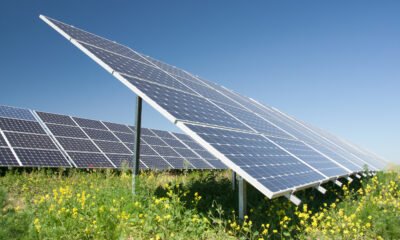

Economy
Green Building Solutions For Preventing Environmental Illness
People are steadily becoming more aware of how our environments impact our health, but those who suffer from environmental illnesses such as Sick Building Syndrome experience these dangers more acutely than most. In order to create healthier living and working environments that reduce the risks of such illnesses and make spaces more accessible, construction companies are working to adopt greener building solutions.
Are you ready to adopt these health measures in your new constructions? Here are X easy steps that make buildings less hazardous for those with environmental illnesses.
The Power Of Inert(ia)
Many companies only adopt greener building practices with restrictions are put in place preventing less environmentally friendly old habits. It’s the power of inertia – we just keep doing what we were doing before, going in the same direction or not moving at all.
When we break free of this construction habit inertia, we have room to start thinking differently about how we build and what we build with. Consider home siding. Vinyl siding is not uncommon in the construction business, but as a material it can be hazardous to those with environmental illnesses as vinyl leaches chemicals.
A better material is fiber-cement siding, which comes mostly from recycled materials instead of fossil fuels. And what’s more, fiber-cement is biologically inert, making it much safer for chemically sensitive individuals.
Carpet With Caution
Synthetic carpet fibers are another major offender against those with environmental illnesses. Most of us are familiar with that “new carpet smell” – new carpet goes down in your home and there’s an odd smell, but it fades over time. This smell comes from a process called offgassing and can be tied back to the fibers, glues, and other chemical treatments that carpeting is exposed to.
Instead of synthetic carpet fibers, hardwood floors topped with natural carpets made from cotton or wool are much healthier. These natural fibers don’t produce the uncomfortable symptoms of environmental illness like headaches, nosebleeds, coughing, and rashes.
Be Air Aware
Air quality is one of the most important factors in building safe environments for those with chemical sensitivities and environmental illnesses. That’s why best practices dictate that new constructions have excellent air filtration systems with specific controls, especially if the space is shared. Even storage areas need to be fully ventilated.
Additionally, no matter how powerful the air filtration system, buildings need a complete inspection for mold and other airborne toxins and all signs of mold must be removed before anyone enters the building. Even for extremely healthy people, mold can pose significant health dangers, particularly toxic black mold varieties. These can lurk behind walls, making them especially difficult to eradicate.
Green building practices that emphasize sustainable materials alongside body-friendly ones are poised to take over the construction industry in the next few decades. These buildings have the potential to dramatically improve the health of environmentally sensitive individual who aren’t served by current toxic building practices. In fact, we may all be surprised how much better we feel as these practices begin to take hold.


 Business12 months ago
Business12 months agoHow to Become an Environmentally Conscious Entrepreneur in 2024

 Features5 months ago
Features5 months ago3 Ways an Outdoor Kitchen Can Make Your Home Eco-Friendly

 Invest12 months ago
Invest12 months agoShould Eco-Friendly Investors Support Biotechnology Companies?

 Energy11 months ago
Energy11 months agoComparing Renewable Energy: Solar Power, Wind, Hydro & Bio


















